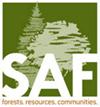美国农业部林业局木材产品产出调查项目无响应分析
IF 1.5
4区 农林科学
Q2 FORESTRY
引用次数: 0
摘要
木材产品产出(TPO)调查用于确定圆材的工业用途,报告按树种和采伐县划分的原始森林工业收到的圆材数量和产生的残余物。这些知识有助于利益攸关方就现有森林资源和/或采伐强度作出知情决定。TPO估计的广泛使用使得了解调查中缺失数据的规模和范围变得重要。第一次尝试分析了北部和南部TPO地区的受访者层面和问题层面的无回应(分别为RLNR和QLNR),比较了对工厂概况问题(提供一般商业信息的问题)和与工厂活动有关的问题(与木材加工信息有关的问题)的回应。根据问题分组、调查模式和工厂数量,RLNR在地区之间存在差异。对于选定的工厂活动问题的QLNR结果表明,南部地区通常比北部地区有更低的无响应。RLNR的参数分析表明,调查模式对北部地区的两个问题组都有显著性,而工厂类型对南部地区的工厂活动问题有显著性。QLNR参数分析表明,北部地区的自我管理调查与较高的无反应相关,南部地区的锯木厂完成的调查与较低的无反应相关。研究意义:对全国木材产品产量调查中调查项目无反应的分析提供了评估调查数据准确性和完整性所需的分析背景。从数据中得出的人口估计数用于监测圆木生产,并对森林资源作出明智的决定。具体问题的回答各不相同,地区差异似乎与调查方式有关。目前的调查设计可以改进,以便分析所有调查问题和评估答复的质量。要使非响应平差方法在区域间具有可比性,首先要解决造成观测到的区域差异的因素。本文章由计算机程序翻译,如有差异,请以英文原文为准。
USDA Forest Service Timber Products Output Survey Item Nonresponse Analysis
The Timber Products Output (TPO) survey is used to determine industrial uses of roundwood, reporting on volumes of roundwood received and residues generated by the primary forest industry by tree species and counties of harvest. This knowledge aids stakeholders in making informed decisions about available forest resources and/or harvest intensity. The widespread use of TPO estimates makes it important to understand the scale and scope of missing data in the survey. This first attempt analyzed respondent-level and question-level nonresponse (RLNR and QLNR, respectively) for Northern and Southern TPO regions, comparing response to mill profile questions (those providing general business information) to those related to mill activity (that related to wood processing information). The RLNR differed between regions, by question grouping, survey mode, and mill volume. The QLNR results for selected mill activity questions indicate that the Southern region generally has lower nonresponse than the Northern region. Parametric analysis of RLNR indicated survey mode was significant for both question groups in the Northern region whereas mill type was significant for mill activity questions in the Southern region. The QLNR parametric analysis indicated self-administered surveys in the Northern region were associated with higher nonresponse, and surveys completed by sawmills in the Southern region were associated with lower nonresponse.
Study Implications: Analysis of survey item nonresponse in the national Timber Products Output survey provides analytic background needed to assess the accuracy and completeness of the survey data. Population estimates from the data are used to monitor roundwood production and make informed decisions about forest resources. Responses varied across specific questions, and regional differences appeared to be related to survey mode. Current survey design could be improved to allow for analysis of all survey questions and assessment of the quality of responses. For nonresponse adjustment methods to be comparable across regions, factors causing observed regional difference should first be addressed.
求助全文
通过发布文献求助,成功后即可免费获取论文全文。
去求助
来源期刊

Forest Science
农林科学-林学
CiteScore
2.80
自引率
7.10%
发文量
45
审稿时长
3 months
期刊介绍:
Forest Science is a peer-reviewed journal publishing fundamental and applied research that explores all aspects of natural and social sciences as they apply to the function and management of the forested ecosystems of the world. Topics include silviculture, forest management, biometrics, economics, entomology & pathology, fire & fuels management, forest ecology, genetics & tree improvement, geospatial technologies, harvesting & utilization, landscape ecology, operations research, forest policy, physiology, recreation, social sciences, soils & hydrology, and wildlife management.
Forest Science is published bimonthly in February, April, June, August, October, and December.
 求助内容:
求助内容: 应助结果提醒方式:
应助结果提醒方式:


